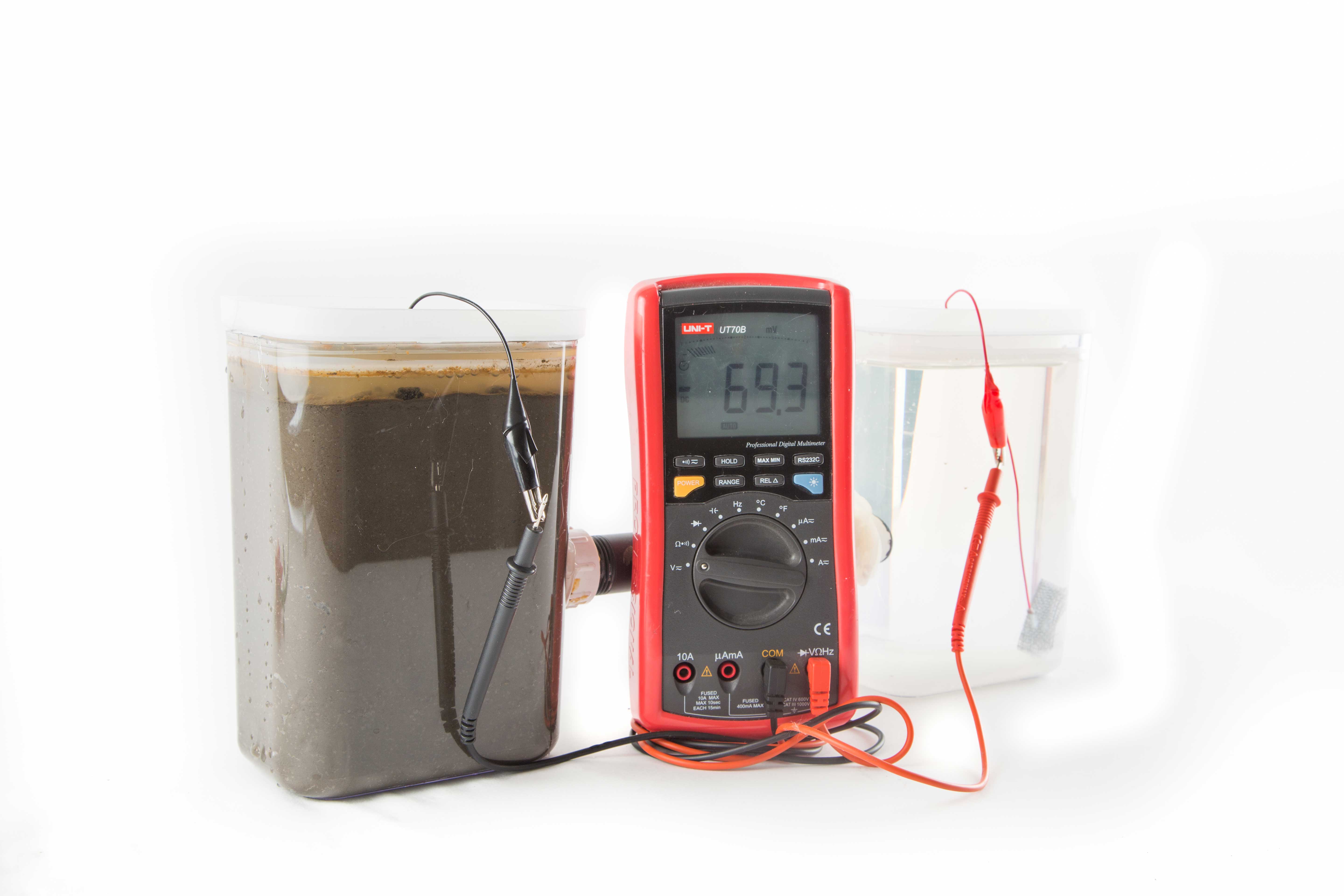

With some mud, salt, and water, you can create a closed circuit that generates a current. This is called a microbial fuel cell, a device that uses bacteria to create electrical power by oxidizing simple compounds like glucose or organic matter in wastewater. Given the finite supply of fossil fuels, this biofuel cell is a promising approach for generating power in a renewable, carbon-neutral way. Check out these examples:


The fuel cell works when bacteria attach to the electrode in an anode chamber of a cell that is oxygen-free. Since the bacteria do not have oxygen, they must transfer their electrons somewhere else. The cathode however is exposed to oxygen; thus, the two electrodes are at different potentials and create a bio-barrier or a “fuel-cell.”














